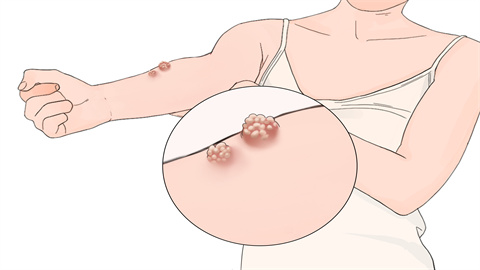Which is better for treating filiform warts: cryotherapy or laser treatment?
When selecting a treatment method for filiform warts, cryotherapy and laser therapy can generally be compared in terms of treatment efficiency, trauma size, applicable wart types, pain level, and recurrence probability, allowing selection of a more suitable method based on actual needs. If in doubt, it is recommended to seek medical advice in advance. Detailed analysis is as follows:

1. Treatment Efficiency: Cryotherapy usually involves a short single-session treatment time, but wart shedding may take 1–2 weeks, and larger warts may require multiple treatments. Laser therapy directly vaporizes the wart in a single session, with a postoperative recovery time of approximately one week, making it more efficient overall.
2. Trauma Size: Cryotherapy destroys warts through low temperatures and may result in blisters and scabs post-treatment, with relatively larger wound surfaces. Laser therapy is precisely targeted, acting only on the wart tissue, causing minimal damage to surrounding healthy skin, and resulting in smaller wound surfaces.
3. Applicable Wart Types: Cryotherapy is suitable for small, multiple warts, especially on non-exposed areas such as limbs. Laser therapy is more suitable for warts on exposed areas such as the face and neck, as well as thicker-based or slightly larger filiform warts, effectively reducing the risk of scarring.
4. Pain Level: Cryotherapy causes a distinct icy, stinging sensation during treatment, and blister rupture afterward may cause mild pain. Laser therapy causes a brief burning sensation during treatment; local anesthesia can be applied beforehand, and post-treatment pain is mild and short-lived.
5. Recurrence Probability: If the low temperature in cryotherapy does not completely destroy the wart roots, the recurrence rate tends to be higher. Laser therapy can thoroughly eliminate lesions by targeting deeper wart roots, resulting in a lower recurrence rate. Follow-up care is needed to further reduce recurrence risk.
After treatment, keep the wound clean and dry, avoid scratching, and allow scabs to fall off naturally. Enhancing immunity can also help reduce the risk of recurrence.




